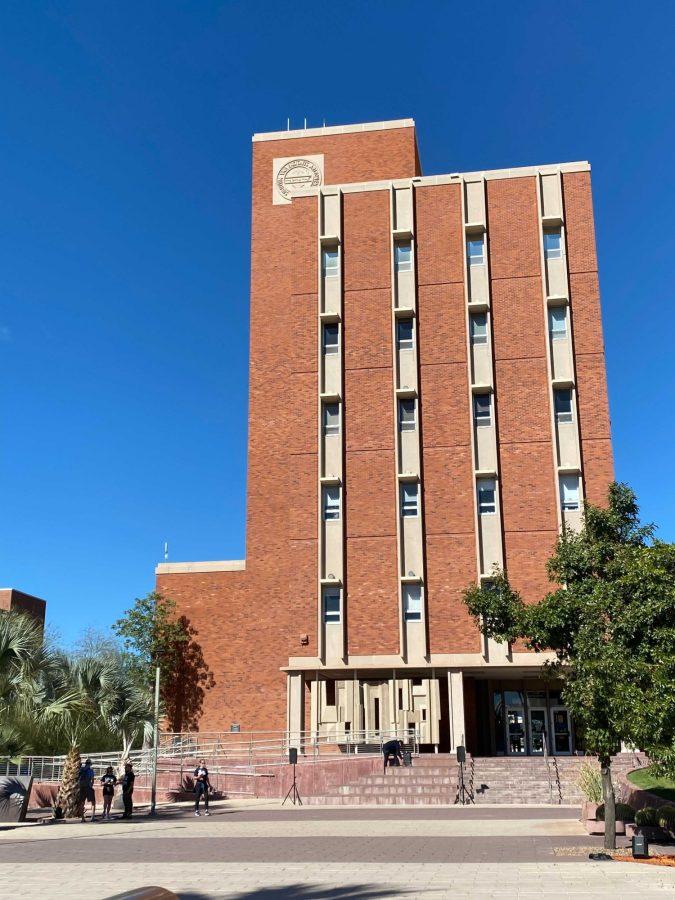Scientists, mentors, parents and members of the community bustled through the hallways of the Thomas W. Keating building at the UA on Saturday, on their way to listen to students presenting their scientific research and findings.
The Undergraduate Biology Research Program held an annual conference to give students an opportunity to present the results of their projects to members of the general public.
Since UBRP began 24 years ago, it has helped students from many diverse backgrounds advance their science education. Students presented their experiments and research in the form of posters, which are often used at scientific conferences because they can convey a lot of information very quickly, said Carol Bender, director of UBRP and program director of molecular and cellular biology.
“The people who are going to be walking around and talking to them, some of them are scientists and they may have suggestions for how they [students] can tweak their experiments or how they can address problems they’ve encountered,” Bender said.
Other attendees were parents and general members of the public.
“It’s really important they are able to explain their work in terms that anybody could understand,” Bender said.
The presenting students ranged from high school to post-baccalaureate students with diverse majors and interests. A vast majority, 70 percent, are majoring in life sciences, while the rest vary from engineering to social science to psychology majors. The most unusual in UBRP history was a cello performance major, said Bender.
The posters covered topics including black-tailed prairie dogs, and the protein composition of epidemic and non-epidemic strains of clostridium difficile – a bacterium that commonly affects hospital patients.
“It was quite nerve-wracking because this is my first time presenting data at all scientifically related, besides my lab experiments like during school,” UA physiology sophomore Ashwini Kaveti said. “I’m glad I’m getting this experience.”
Kaveti’s project, “Administration of Bifidobacterium Infantis Reduces Intestinal Inflammation in a Rat Model of Necrotizing Enterocolitis,” is a culmination of research that began last summer.
“This was my first research experience as an undergrad and it was really valuable to me to not only to get to participate in this research, but also to be able to see firsthand and interact with the community of scientists,” said Daniel Koblas, a microbiology sophomore at Arizona Western College.
His research, like Kaveti’s, has been ongoing for six months.
Anybody who has an interest in biologically weighted research and can convince UBRP it is a valuable idea for their education and career goals is welcome to participate, said Bender.
More than 300 students apply every year, and one in every five is selected. The highly competitive program teaches students that knowledge has an application, Bender said.
“It gives all of these kids a head start on their careers,” said Charles Sterling, professor and head of the Department of Veterinary Science and Microbiology. “The success rate of our students is very high.”
Gayatri Vedantam, a professor for the UA Department of Veterinary Science and Microbiology and a research health scientist for the Tucson VA Hospital, had several students presenting work at the conference.
“Our success in science here as faculty members is solely and totally dependent on the success of our students,” Vedantam said. “They are the engines that are making this whole scientific enterprise go. It’s nice, I think, for the rest of the university and community to come and listen to them as well.”
For students who are interested in applying for the UBRP summer program, applications are due Feb. 1.








